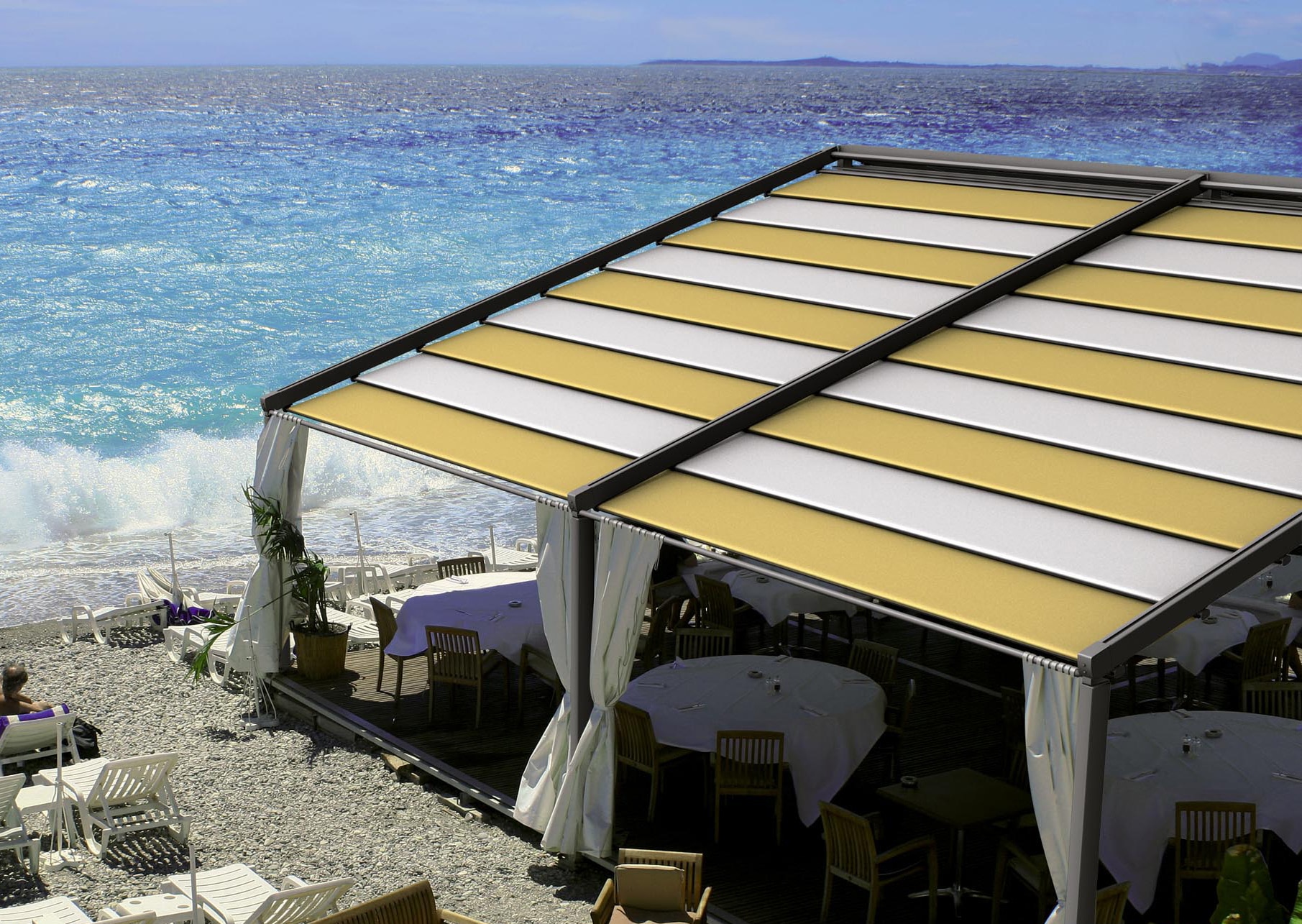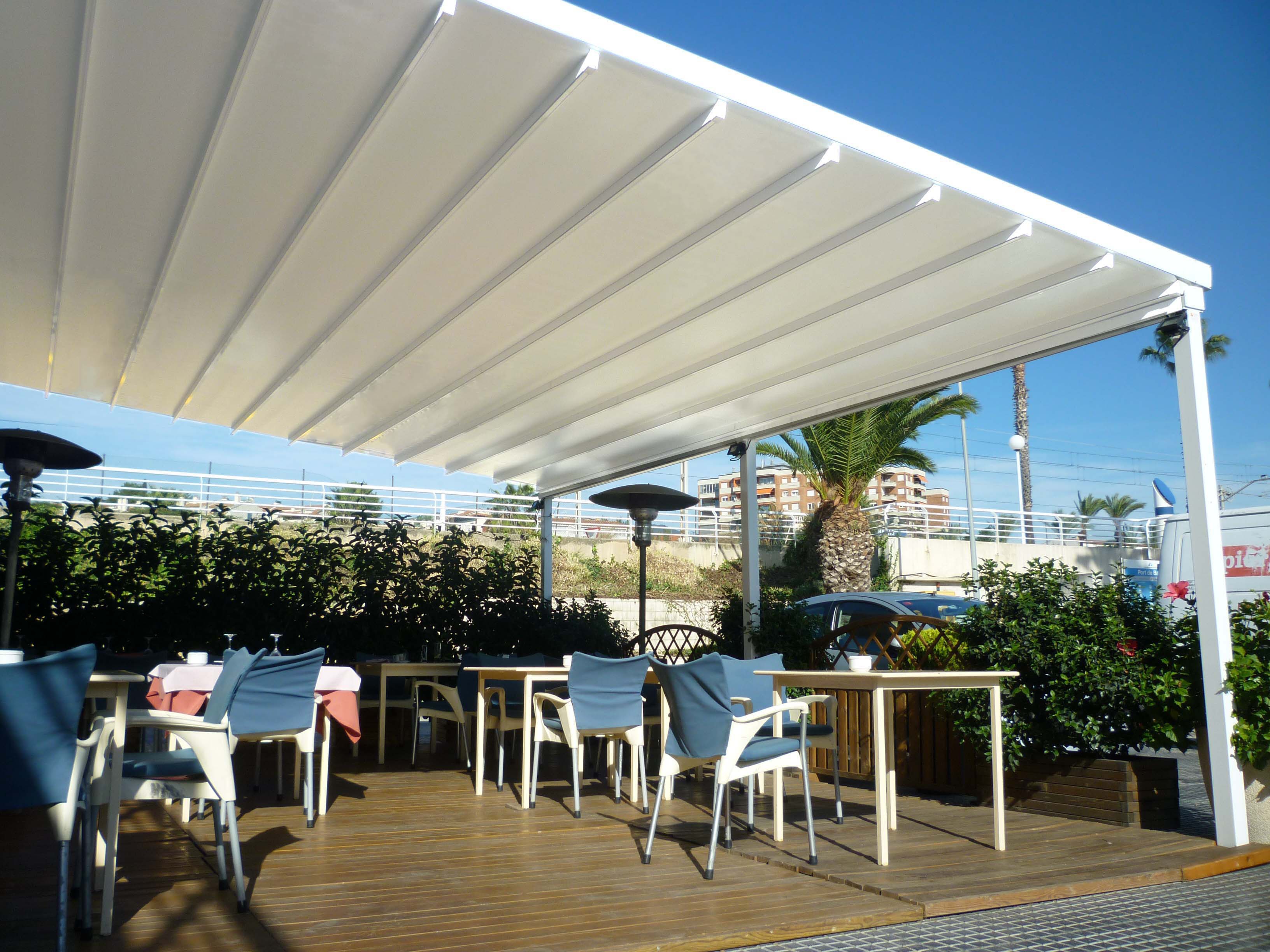

Awning fabrics are subject to direct sunlight, strong winds and sometimes humidity and rain. To ensure that the awning has a long life and can withstand intense use, both high-quality fabrics and a reliable welding process are essential. The individual sheets must be properly joined to produce a perfect, watertight fit. Hem seams, piping, and concave welds must be capable of withstanding great strain. With Leister's welding machines like SEAMTEK, producing durable welds is no problem at all. Leister’s welding machines and heat guns are excellent choices for awning manufacturers.

Shade sails, awnings and shade screens are easy to retract on campers and motorhomes using the specially mounted tracks. Shade sails must also be equipped with hems, pole pockets and grommets.
Shade sails are a standard feature in motorhomes and campers, intended to provide protection from the sun. Although permanently installed awnings are not always the best choice for motorhomes due to their weight and/or location, shade sails are a great alternative.